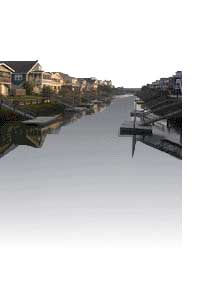|
Two French Masters: Edouard Boubat and Jean-Philippe Charbonnier Duncan Miller Gallery,
Los Angeles, USA United States of America
Édouard Boubat is considered Frances most famous romantic photographer.
He began to photograph in earnest after World War II. As such, his approach was deeply affected by what he had seen and experienced:
Because I know war… because I know the horror, I dont want to add to it.… After the war, we felt the need to celebrate
life, and for me photography was the means to achieve this. Spanning a 50 year career, Boubats photographs do just that. They
celebrate the beauty, simplicity, and little things in life. His first photograph was taken in the Jardin du Luxembourg in
1946, Little Girl with Dead Leaves, which won him the Kodak Prize, an amazing start to a remarkable career. Jean-Philippe
Charbonniers photography was also born of post-World War II Europe. In 1950, he went to work as a photojournalist for the
renowned Realités magazine, where he often collaborated with Édouard Boubat who was also on staff. Charbonnier left Realités
in July 1974, disillusioned with standardization he felt had come to dominate the world of photography. Freed from the anguish
of ordered work, Charbonnier began to explore his nearby surroundings in Paris - capturing scenes from the neighborhood of
Notre Dame with subjects that defined the Parisian allure. In regards to these images, he said, I photographed all these people,
not always without cruelty, certainly, but with an impassioned interest, with a lucid tenderness. Both these artists used
photography as a means to meet his fellow man and to reveal humanity in all its poetry and pathos, said Daniel Miller, founder
and owner of the Duncan Miller Gallery. As heirs to Henri Cartier-Bressons decisive moment photography, both artists capture
moments in a fraction of a second and simultaneously provide meaningful context to their images. As you look at the photographs
throughout the collection, youll be impressed by the fleeting, magical moments that cover the walls, and that could only be
suspended and frozen in time by the confident eyes of true masters. Robert Doisneau, another of Frances prolific reportage
photographers, said of Boubats work: One must look-and I mean really look-at his images and breathe them in deeply as one
would fresh air from an open window. Their radiance gives such a sense of well-being that afterwards you will, I hope, no
longer see the world or people in the same way. Charbonniers life-long friend, Michel Kempf said of his work: In a life of
world tours, meetings with an entire generation of celebrities and meetings with just as many others torn from their anonymity
in the 60th of a second that an exposure lasts, Jean-Philippe Charbonnier did not just take his pictures, he also told thousands
upon thousands of stories. Édouard Boubat is considered Frances most famous romantic photographer. He began to photograph
in earnest after World War II. As such, his approach was deeply affected by what he had seen and experienced: Because I know
war… because I know the horror, I dont want to add to it.… After the war, we felt the need to celebrate life,
and for me photography was the means to achieve this. Spanning a 50 year career, Boubats photographs do just that. They celebrate
the beauty, simplicity, and little things in life. His first photograph was taken in the Jardin du Luxembourg in 1946, Little
Girl with Dead Leaves, which won him the Kodak Prize, an amazing start to a remarkable career. Jean-Philippe Charbonniers
photography was also born of post-World War II Europe. In 1950, he went to work as a photojournalist for the renowned Realités
magazine, where he often collaborated with Édouard Boubat who was also on staff. Charbonnier left Realités in July 1974, disillusioned
with standardization he felt had come to dominate the world of photography. Freed from the anguish of ordered work, Charbonnier
began to explore his nearby surroundings in Paris - capturing scenes from the neighborhood of Notre Dame with subjects that
defined the Parisian allure. In regards to these images, he said, I photographed all these people, not always without cruelty,
certainly, but with an impassioned interest, with a lucid tenderness. Both these artists used photography as a means to meet
his fellow man and to reveal humanity in all its poetry and pathos, said Daniel Miller, founder and owner of the Duncan Miller
Gallery. As heirs to Henri Cartier-Bressons decisive moment photography, both artists capture moments in a fraction of a second
and simultaneously provide meaningful context to their images. As you look at the photographs throughout the collection, youll
be impressed by the fleeting, magical moments that cover the walls, and that could only be suspended and frozen in time by
the confident eyes of true masters. Robert Doisneau, another of Frances prolific reportage photographers, said of Boubats
work: One must look-and I mean really look-at his images and breathe them in deeply as one would fresh air from an open window.
Their radiance gives such a sense of well-being that afterwards you will, I hope, no longer see the world or people in the
same way. Charbonniers life-long friend, Michel Kempf said of his work: In a life of world tours, meetings with an entire
generation of celebrities and meetings with just as many others torn from their anonymity in the 60th of a second that an
exposure lasts, Jean-Philippe Charbonnier did not just take his pictures, he also told thousands upon thousands of stories.
- Read Indepth Article at http://www.absolutearts.com
|
